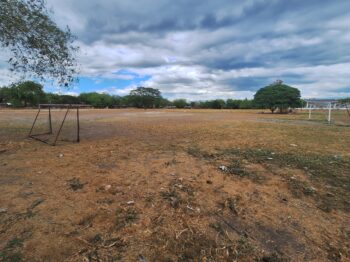MATALAM, North Cotabato (MindaNews / 11vJune) — The Department of Health (DOH) reported the first case of COVID–19 in the country on January 30, 2020. It involved a 38-year-old Chinese woman who was confined in the San Lazaro Hospital in Manila. The second case was confirmed on February 2, that of a 44-year-old Chinese man who died a day earlier, which was also the first confirmed death from the disease outside mainland China.
The first case of someone without travel history abroad was confirmed on March 5, a 62-year-old male who frequented a Muslim prayer hall in San Juan, Metro Manila, raising suspicions that a community transmission of COVID-19 was already underway in the Philippines. The man’s wife was confirmed to have contracted COVID-19 on March 7, which was also the first case of local transmission in the country.
From then on, or more specifically March 22 to May 10, transmission rates are averaging less than 200 new cases daily except March 31 and April 6 when there were sudden spikes of 538 and 414 new cases respectively. From April 7 to May 21 daily transmission rates have been recorded at an average of 226 new cases. From May 22 to May 27 there was a steady rise in new cases from 163 to 380 until May 28 when there was again an unusual rise in transmission figures at 539 new cases.
Then came the highest recorded new cases of COVID-19 in the country on May 29 at 1,046. The DOH was quick to admit that the sudden spike in infection rate was due to backlogs by some accredited laboratory testing centers. A test made four days ago or more whose results are included in more recent tests are considered backlogs.
From this day on till June 7, 2020 there was an average daily new cases of 630. This new set of consistently high new transmission cases may not yet suggest a second wave of transmission but it is nevertheless alarming for two reasons: first, we are getting farther away from flattening the curve, and second, there were obvious lapses somewhere in the matter of managing and implementing detection, isolation, and quarantine measures.
With the easing up of quarantine measures, more specifically, the shift from enhanced community quarantine (ECQ) to general community quarantine (GCQ) for the National Capital Region (NCR), and from GCQ to modified GCQ for other regions of the country (in Mindanao, only Davao and Zamboanga cities are under GCQ, the rest are under MGCQ), the responsibility of containing the spread of the virus is now effectively transferred from the health authorities to the people. In many instances, this has created confusion for some local government units (LGUs) and their constituents. Despite clear policies and guidelines from the Inter-Agency Task Force (IATF), some LGUs differ in their interpretations or deliberately impose additional and more often unnecessary measures.
The easing up of quarantine measures should not be celebrated, as most people would like to think, but it should rather be seen as leveling up of the storm signal. As such, we have to be more vigilant and more responsible in keeping ourselves and our loved ones safe from contamination. This makes wearing of face masks in crowded and confined areas, maintaining safe physical distance, and keeping ourselves clean all the more necessary.
(MindaViews is the opinion section of MindaNews. Maugan P. Mosaid, PhD (FB account: Maxim Sense) is a freelance writer. He is a planning consultant and teaches Statistics in the graduate school.







